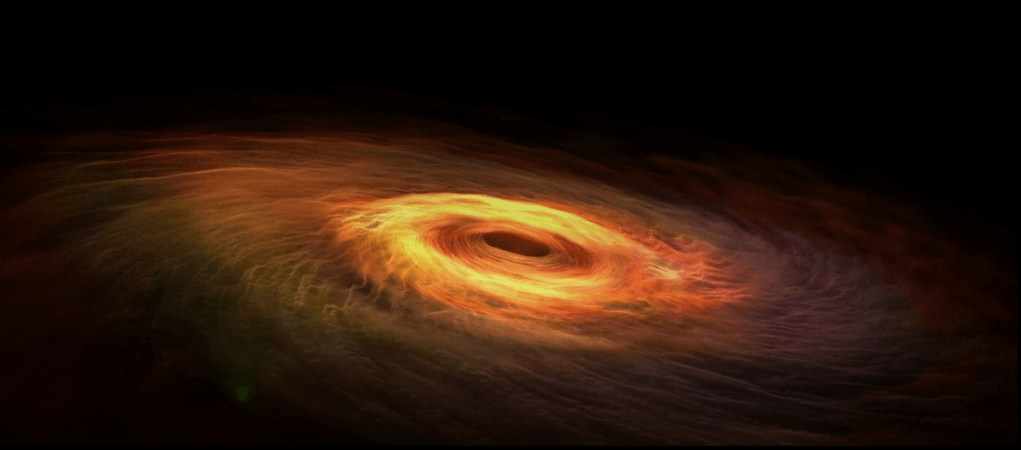
The idea that black holes have this massive ring, called the firewall surrounding it, might not be true, instead, black holes are likely to be giant balls of string-like material that keeps growing.
A new study argues that the widely-accepted concept of a firewall around the perimeter of black holes that burns everything falling through it is flawed. This study, carried out in the Ohio State University (OSU) was led by researcher Samir Mathur.
The team studied what exactly would happen if a singular electron fell into what they call a "typical black hole", comparable to the Sun in mass, notes a report by the OSU.
"The probability of the electron hitting a photon from the radiation and burning up is negligible, dropping even further if one considers larger black holes known to exist in space," said Mathur.
This new study carries on from a study that was led by Mathur in 2004, notes the report. It theorized that black holes can be likened to giant balls of string. He claimed that these "fuzzballs" gather additional material as new objects like stars and planets get sucked in. That theory, said Mathur, addressed the black hole "information paradox" that Steven Hawking outlined in 1975.
Hawking concluded that anything that enters a black hole will never leave it. This notion, however, is in opposition to the laws of quantum mechanics, thus the paradox.
On the other hand, the firewall theory came together in 2012, when physicists from the University of California argued that if an object like a fuzzball should exist, it would have to be bordered by a "ring of fire" and that will incinerate just about any object well before reaches the fuzzball surface.
"What we've shown in this new study is a flaw in the firewall argument," Mathur said.

Black holes, notes the report, are spots in space with an immeasurable gravitational pull that is so strong that even light cannot escape it. This is one of the reasons why black holes have never been photographed—gravity simply condenses any matter that black holes draw in. They appear to be invisible, but scientists know that sizes of black holes range from tiny to supermassive. These estimations are reportedly based on the way stars and gas surrounding black holes behave.
Mathur and his team came to the conclusion that the fuzzball theory still holds up even after the firewall is removed from the equation. Mathur and his team have based their study on string theory—the idea that the entire universe is made up of string-like tubes of energy in the subatomic level.
"The question is 'Where does the black hole grab you?' We think that as a person approaches the horizon, the fuzzball surface grows to meet it before it has a chance to reach the hottest part of the radiation," he said. Adding that this crucial finding in the new paper invalidates the firewall argument.
Once a person falling into a black hole is tangled up in strings, there's no easy way to decide what they might feel, he explained. The firewall argument seemed like a way to prove that something falling through the event horizon burns up instantly, but it is now clear that there cannot be a simple answer to this query, notes the researchers. "What happens can only be decided by detailed calculations in string theory," Mathur said.
This study was first published in the Journal of High Energy Physics.














